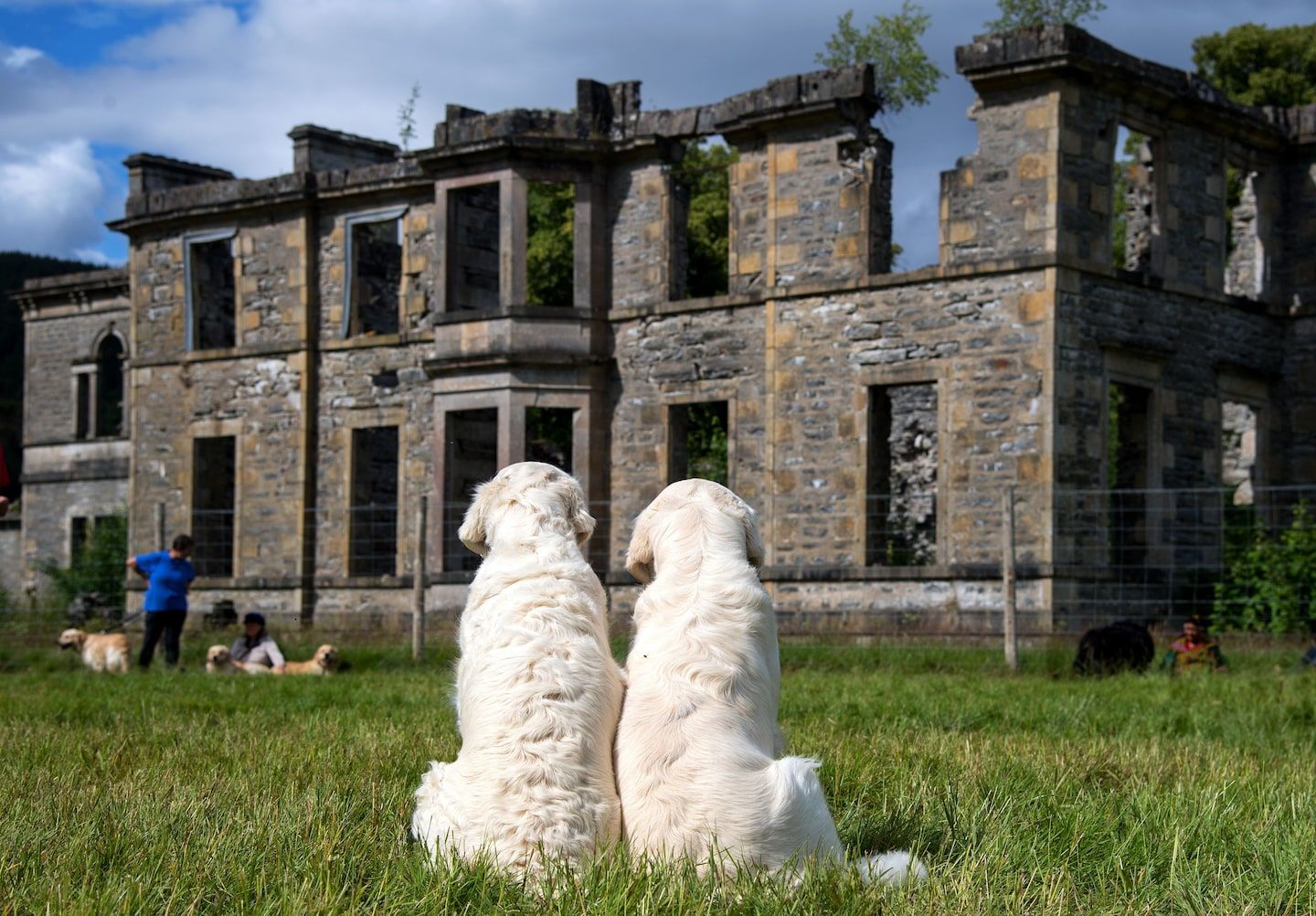Guisachan: The birthplace of the golden retriever in Scotland
Listen 3 min Comment on this story Comment Gift Article Share
When Dudley Coutts Marjoribanks, also known as Lord Tweedmouth, purchased the 20,000-acre Guisachan Estate in 1854, he envisioned breeding a particular dog that could hunt by his side while remaining house-trained enough to stay in his mansion when the pair was not stalking the Scottish Highlands. Wp Get the full experience. Choose your plan ArrowRight “What Lord Tweedmouth wanted was a dog that was a hunter, but he wanted a dog that was unusually friendly and one that had a coat that could take the Scottish weather, which is very cold and rainy,” the historian Curt DiCamillo told The Washington Post in an interview.
Tweedmouth, a Scottish businessman, began experimenting with multiple breeds, keeping detailed handwritten logs in a leather-bound book of litters until the first three golden retriever puppies were born in 1868.
“He was a very meticulous record keeper,” said Christine Miele, a leading member of the Golden Retriever Club of America. Cowslip, Crocus and Primrose were the names of the offspring of Nous, a gold, wavy-coated retriever, and Belle, a Tweed water spaniel.
Advertisement
Today’s golden retrievers no longer fetch quarry as Tweedmouth once instructed his to pursue. Instead, this bouncy, longhair dog that sheds and wags its tail incessantly is more often retrieving sticks and toys. However, Tweedmouth’s other aim, to create a lovable companion, has lasted. Golden retrievers are often described as “Velcro” dogs because they’ll follow their owners everywhere.
The “Guisachan House”— deemed the ancestral home of the golden retriever — was once a lavish self-sufficient estate with a 15-bedroom mansion, a farmstead, a dairy, a laundry, a mill, stables and of course, kennels for Tweedmouth’s dogs. Most of what remains today is in ruins, but the place still honors the breed’s roots with a summer festival where hundreds of golden retrievers and their owners gather about every five years. This year’s Guisachan Gathering marked the 155th anniversary of the breed.
After Tweedmouth bought the estate from the Fraser clan for 60,000 pounds, he began a massive demolition and construction program that would make the grounds fit for a lord. He used the core of an old house on the property and rebuilt the hunting hut for his primary mansion, DiCamillo said. He also built a school that served as a church, a meeting house and a deer skinning hut.
Advertisement
After Tweedmouth died, his son inherited the estate but later sold the property amid misfortunes including the death of his wife at Guisachan, heavy financial losses and ill health.
“That was the beginning of the end of the house,” DiCamillo told The Post.
The estate was used as a recreational site for 27 years, but its upkeep was neglected. It swiftly declined and was again put on the market, except that no one wanted to buy it this time. The property was eventually divided into parcels for sale, with some lots rented out.
Later, the once grand Guisachan Estate was sold to private owners and to the Forestry Commission. The dairy and the farmstead were converted to residences known as Tomich Holidays, a set of pet-friendly cottages available for rent, but the Guisachan House itself is still a skeleton.
Advertisement
Even in its neglected state, hundreds of golden retrievers and their owners continue to travel to their ancestral grounds for “Guisachan,” the summer festival organized by the Golden Retriever Club of Scotland about every five years.
Some people take their goldens’ ashes and sprinkle them on the grounds so that they can be returned to the homeland, said Miele, who has traveled to Guisachan herself with life-size pictures of her golden retrievers to be there in spirit.
“There is a tie there that is hard to describe,” Miele said. “It’s the birthplace of the breed.”
Gift this article Gift Article
Source: The Washington Post


